Holiday Shipping
Holiday Shipping
Shop TalkTire Pressure in Off-Roading: How to Adjust for Different Terrains
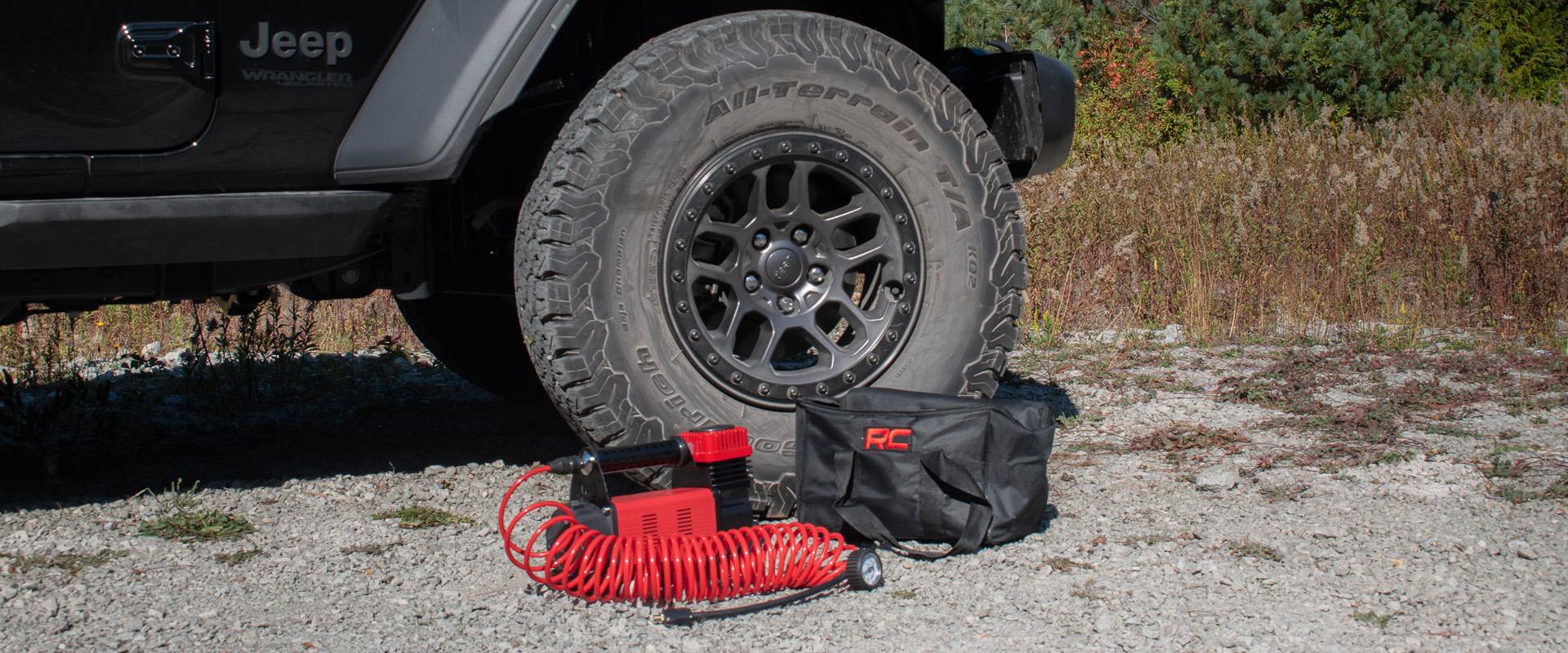
C.G.Racine
October 11, 2024
0
air compressor
off-road safety
tire pressure
PSI adjustment
tire gauge
Why Tire Pressure Matters
Tire pressure plays a crucial role in off-roading performance. Too much, and your ride becomes rigid and unforgiving; too little, and you'll lose control and stability. Finding the right balance gives you better traction, smoother handling, and helps protect your tires from damage on tough terrain. Adjusting your tire pressure is one of the easiest yet most effective ways to enhance your off-road experience and avoid getting stuck.

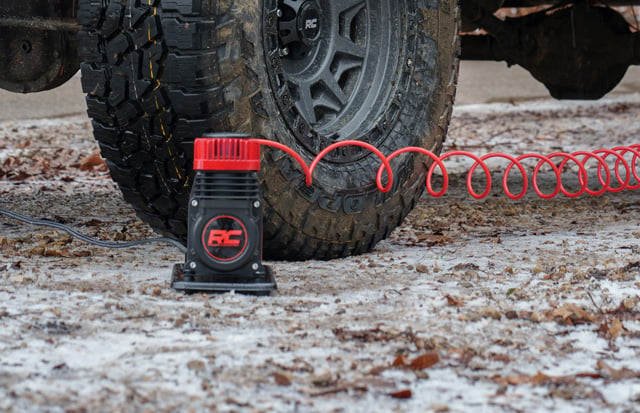
Rock Crawling
When you're creeping over rocks, you want as much tire contact with the surface as possible. Dropping your tire pressure down to about 12-18 PSI lets your tires flex and grip onto the rocks, giving you better traction. It's like gripping a baseball—loose enough for flexibility, but tight enough to hold on. Lowering your PSI helps your rig climb over obstacles more smoothly, reducing the risk of slipping or spinning out.
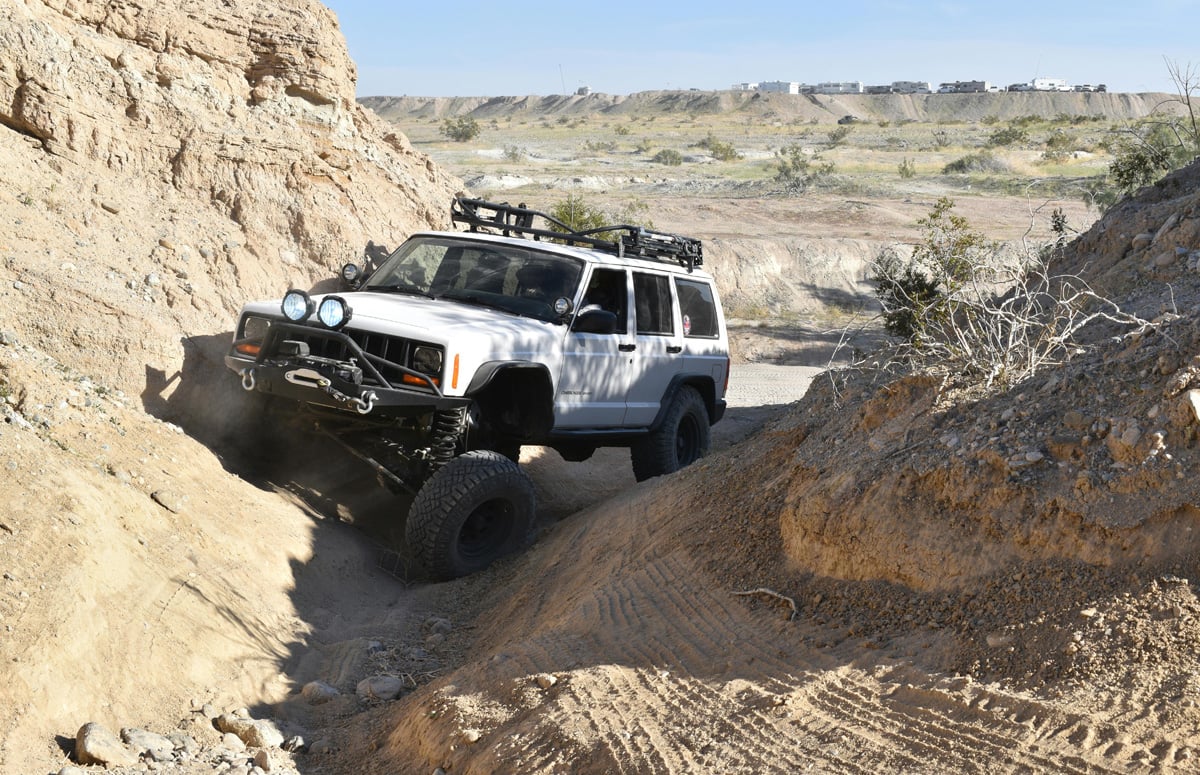

Mud Runs
Mud can be tricky, but it’s all about staying on top of it. You’ll want to drop your tire pressure to about 15-20 PSI to spread out the weight and help your tires "float" over the mud rather than digging into it. This gives you more control and helps prevent getting bogged down in deep, slippery sections. Lower pressure gives your tires a better grip, allowing you to easily push through the muck.
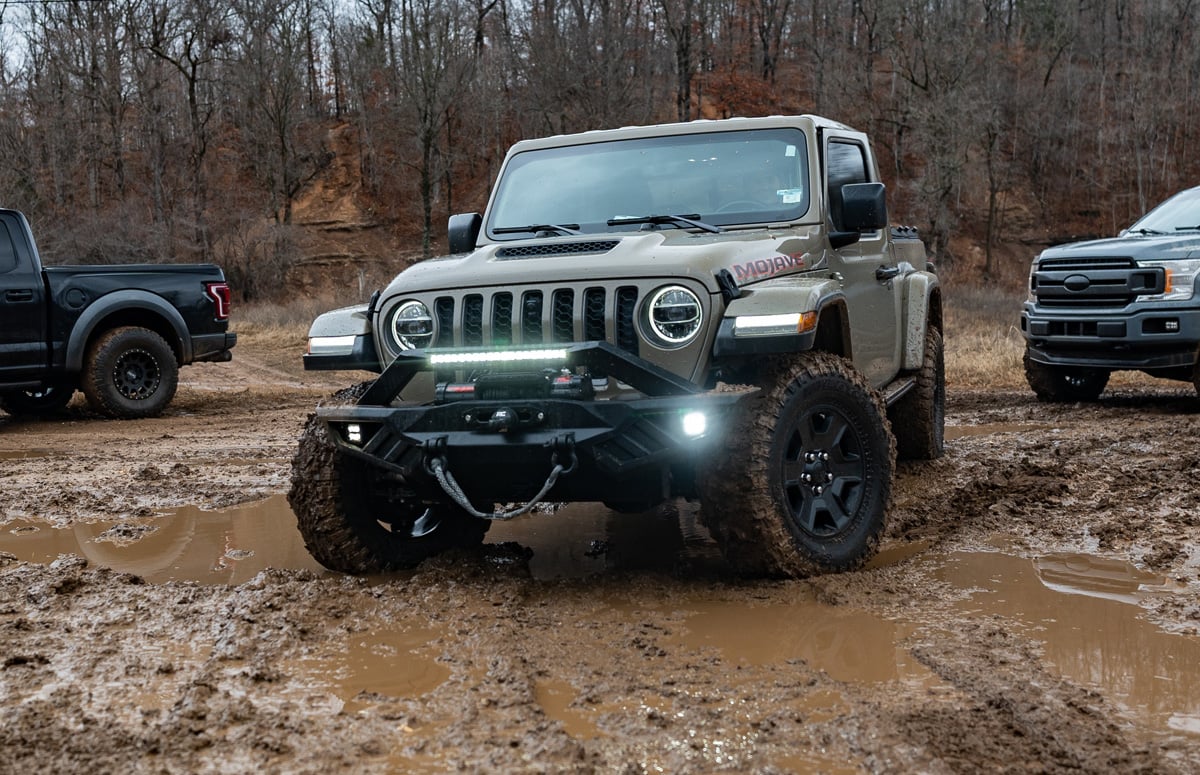

Sand
Driving through sand is like walking on a soft beach—if your tires are too inflated, you’ll sink in and struggle to move. Dropping your PSI to around 10-15 PSI will increase your tires' surface area and allow them to "float" over the sand. Lowering the pressure spreads the load, giving you more traction and preventing your wheels from digging into the dunes. This helps you glide through the sand instead of constantly getting stuck.
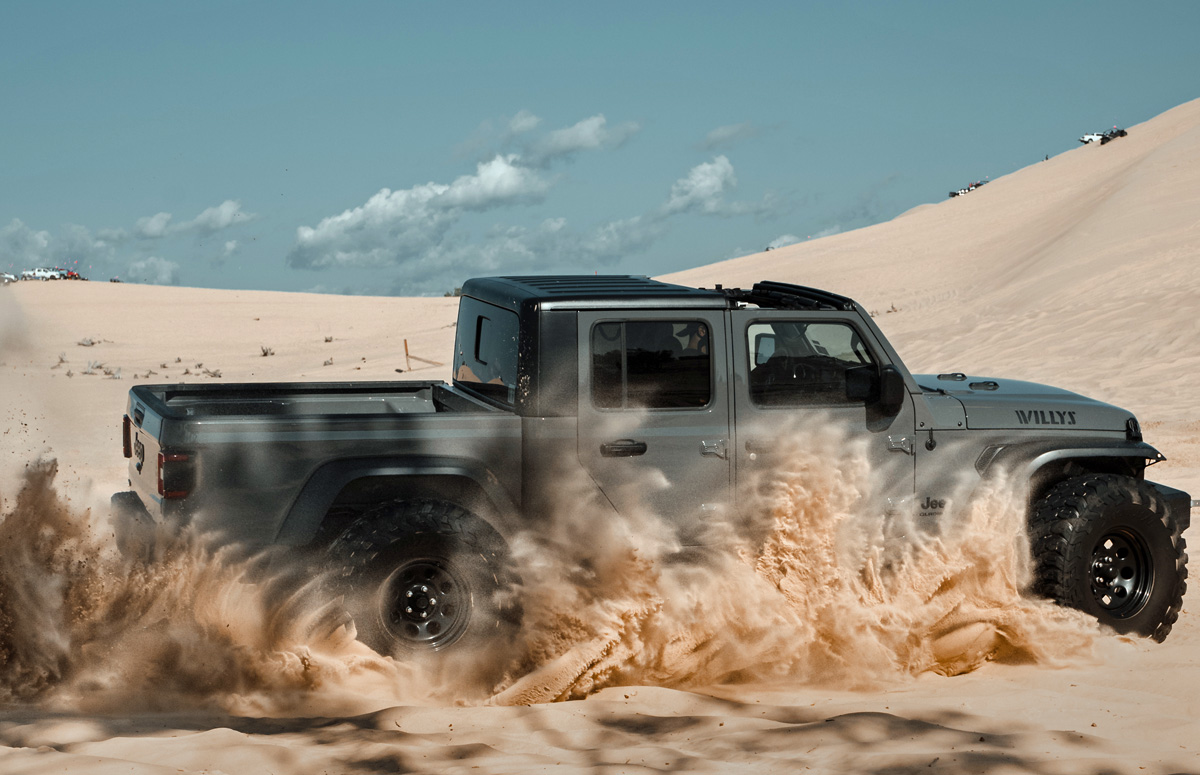

Gravel and Dirt Roads
For loose gravel or dirt roads, you don't need to go too extreme with lowering your tire pressure, but dropping it to around 20-25 PSI can make a big difference. This provides a bit more grip and makes your ride a lot smoother by absorbing bumps and shocks. You’ll feel more stable and in control, especially at higher speeds on rough, uneven surfaces.
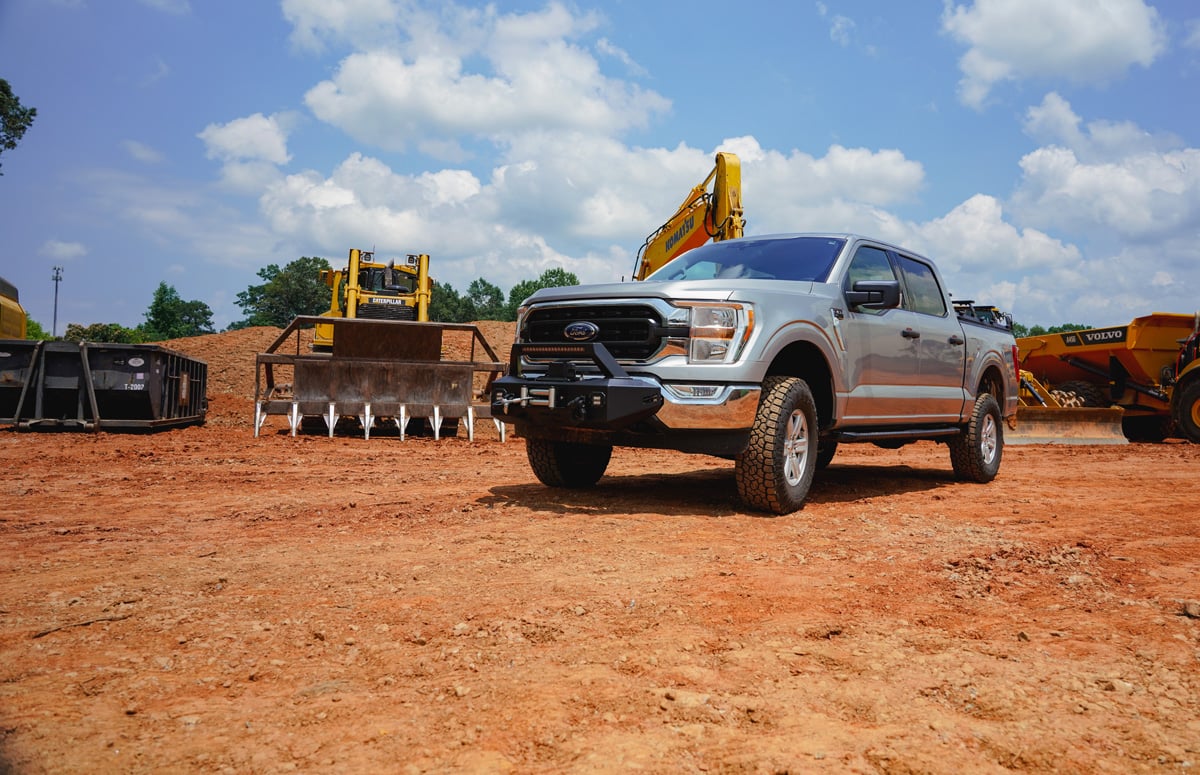
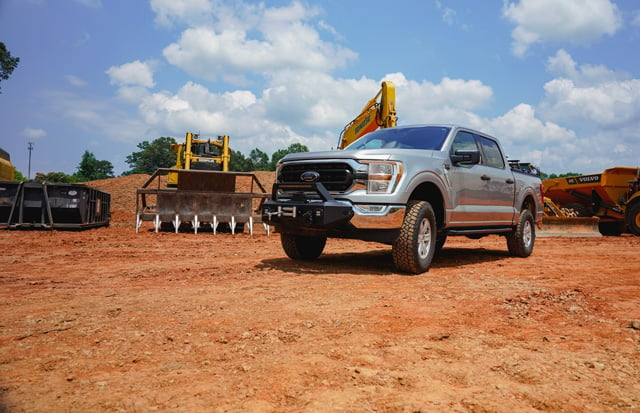
How to Adjust Tire Pressure
Adjusting your tire pressure is pretty straightforward. Before you hit the trail, make sure you’ve got a tire gauge handy so you can monitor your PSI. A good rule of thumb is to air down before you start the trail and air back up when you're ready to head home. The ideal PSI depends on the type of terrain and the weight of your vehicle, so it's always a good idea to experiment a little and find what works best for your rig. And don’t forget to re-inflate your tires when you’re back on pavement for safe driving on regular roads.
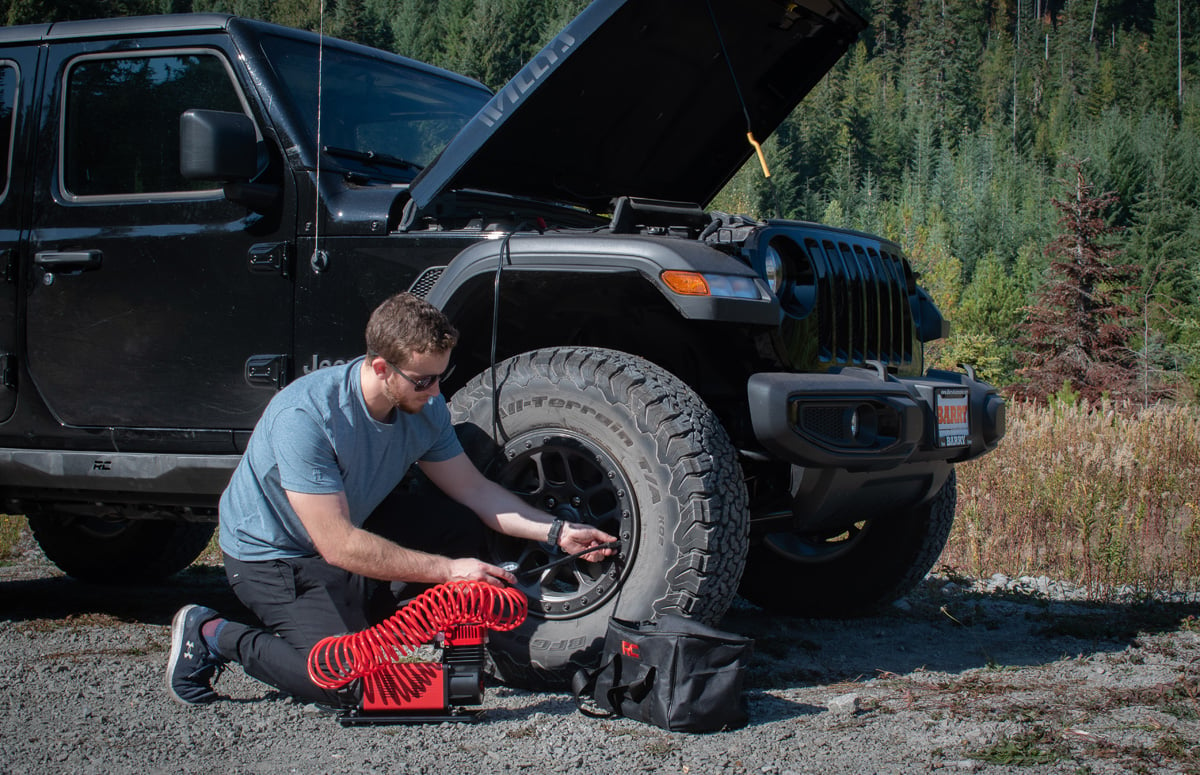
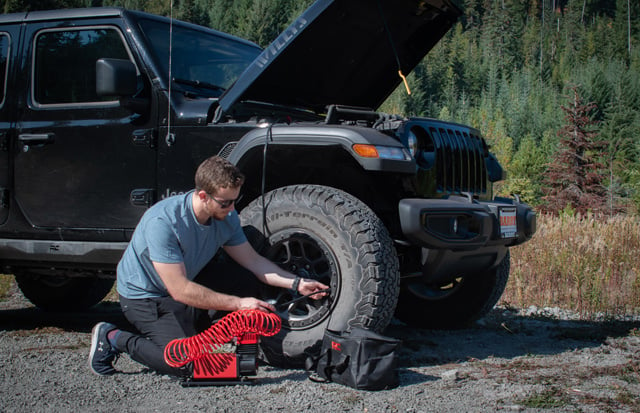
Off-roading is all about being prepared, and knowing how to adjust your tire pressure for different terrains is a key part of that. Whether you're climbing rocks, cutting through mud, or cruising over sand, the right tire pressure can make your ride smoother, safer, and way more fun. So next time you hit the trails, take a minute to dial in your PSI and feel the difference it makes.
Have any tips or tricks for adjusting tire pressure on the trail? Drop them in the comments below—we’d love to hear your experience!
Products in this Article
Air Compressor Kit
12 Volt | 150PSI | 5.65 CFMPortable Twin Motor Air Compressor w/Carry Case
12 Volt | 150PSI | 6.16 CFMBattery Jumper And Air Compressor Combo
Twin Motor Air Compressor Kit
12 Volt | 6.16 CFMLeave a Comment
Shop By Category
Talk to a Build Expert
- 1-800-222-7023Offline
- Email Us
- Offline
Only the Best
Support Hours
| 7am - 10pm | Monday-Thurs |
| 7am - 7pm | Friday |
| 8am - 5pm | Saturday |
| Closed | Sunday |
Customer Service
Company
